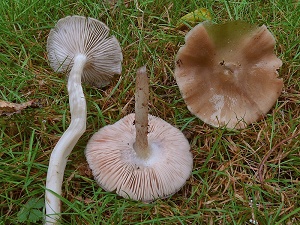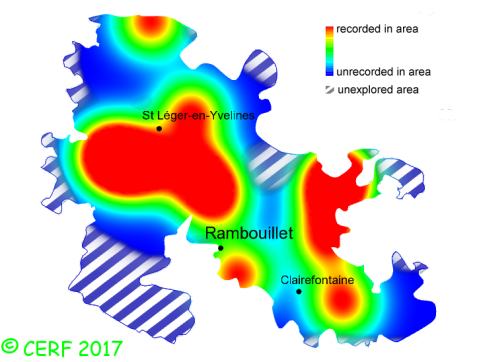| Entoloma rhodopolium fo. nidorosum (Fr.) Noordel. |
|
|
|
|
|
|
The cap is whitish cream to brown. The cap surface is smooth, viscid in wet weather. The stem is whitish to greyish, without ring. The flesh is watery white, unchanging; its taste is unpleasant, slightly mealy; the odour is of bleach, or chlorine, or nitrous, or burnt flesh; its texture is fibrous. The gills are white then pink, distant . The spore print is pink. This species is saprophytic. It grows on the ground, with beech, aspen, hazel, hornbeam, alder. The fruiting period takes place from July to December.
Distinctive features : hygrophanous cap, strong nitrous odour (or of bleach) Entoloma rhodopolium fo. nidorosum is infrequent and scattered in the forest of Rambouillet, and is frequent, more generally speaking . | ||
|
page updated on 14/01/18

